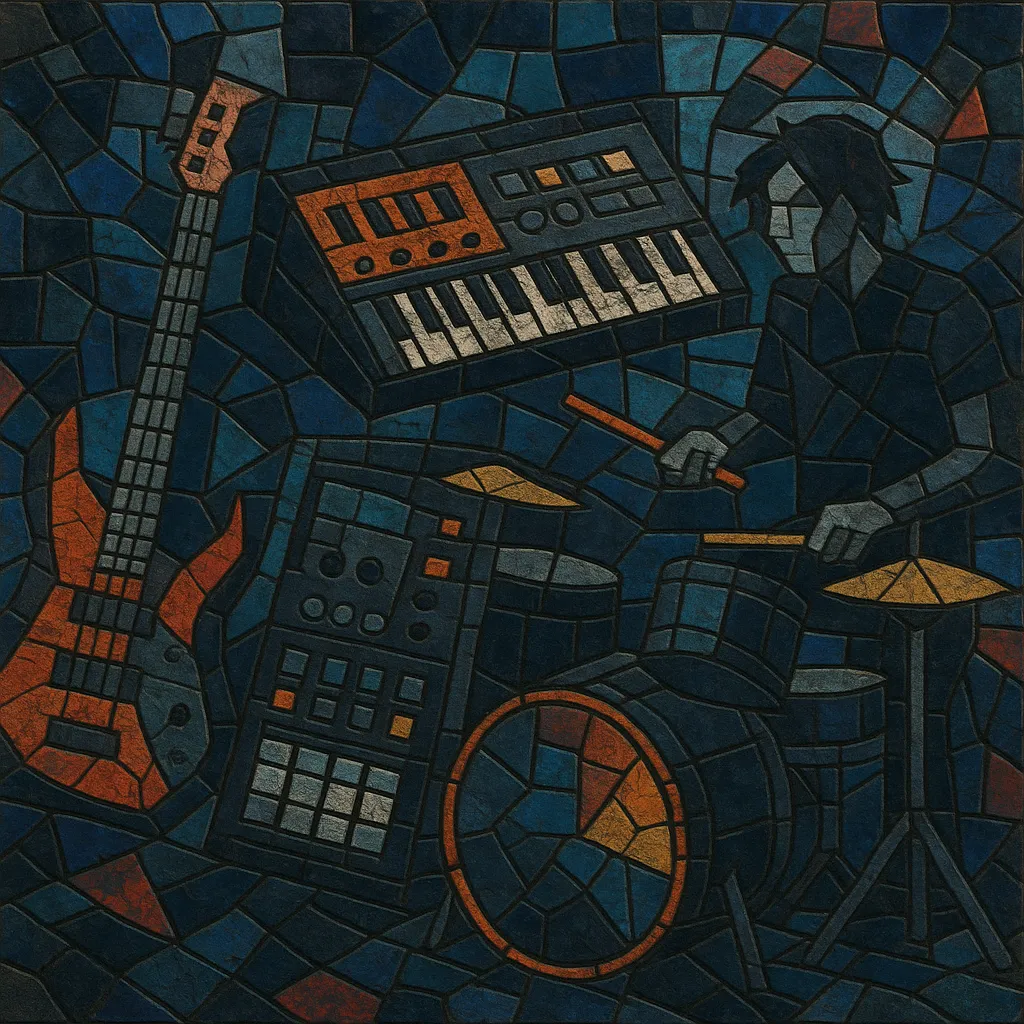
Electronic rock is a fusion genre that blends the instrumentation, songwriting, and performance energy of rock with the timbres, tools, and production methods of electronic music. Guitars, bass, and live drums coexist with synthesizers, drum machines, sequencers, and samplers, yielding textures that can range from shimmering and atmospheric to gritty and industrial.
Stylistically, electronic rock spans motorik grooves and experimental soundscapes, the sleek sheen of new wave and synth-driven hooks, the distortion and aggression of industrial-influenced rock, and the minimalist pulse of indie and dance-oriented hybrids. It often emphasizes sound design, studio processing, and loop-driven rhythms while retaining rock’s song forms, vocal presence, and live performance ethos.
Rock musicians began experimenting with electronic devices in the late 1960s. Acts like Silver Apples and The United States of America used oscillators and early synthesizers alongside rock instrumentation, while The Beatles’ late-era recordings applied tape manipulation and nascent synths. This experimental spirit, informed by musique concrète and studio techniques from tape music, laid the groundwork.
Krautrock in Germany (e.g., Kraftwerk, Neu!) introduced motorik rhythms and a systematic integration of electronics, influencing rock globally. Progressive and art rock broadened the palette with modular synths and sequencers. By the late 1970s and 1980s, new wave and synth-led bands (e.g., Gary Numan, Depeche Mode, New Order) mainstreamed electronic textures within rock song structures, defining a sleek, rhythmic electronic rock sound for the pop and alternative charts.
The 1990s saw a darker, heavier strain as industrial rock and alternative acts (e.g., Nine Inch Nails, U2’s Achtung Baby/Zooropa era, Primal Scream) fused guitars with samplers, drum machines, and digital processing. Simultaneously, UK and US scenes blended indie sensibilities with electronic production, setting the stage for indietronica and dance-punk’s crossover appeal.
Radiohead’s Kid A/Amnesiac era catalyzed a wave of artful electronic rock in alternative spaces. LCD Soundsystem, The Killers, Muse, and M83 integrated synth hooks, live drums, and electronic grooves for festival-scale audiences. Today, electronic rock thrives as a flexible toolbox: from cinematic, synth-heavy anthems to minimalist, loop-centric indie, it informs pop, alternative dance, and even metal crossovers.

